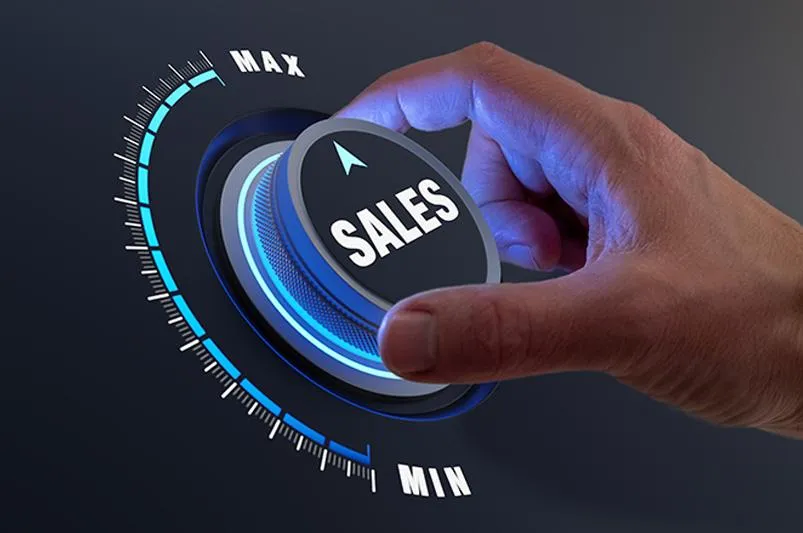
Lead Scoring That Predicts Revenue (Not Just MQLs)
Not all leads are created equal—and yet many sales and marketing teams still rely on outdated scoring methods that prioritize volume over revenue. Traditional lead scoring models focus on Marketing Qualified Leads (MQLs), but MQLs alone don’t guarantee closed deals.
What matters is whether a lead has the attributes and behaviors that truly predict revenue. That’s where event-based scoring models, firmographic data scoring, and predictive lead scoring frameworks come into play.
In this article, we’ll show you how to design a lead scoring system that:
Goes beyond surface-level engagement
Uses predictive models to forecast actual sales outcomes
Accelerates pipeline velocity from MQL to SQL
Aligns marketing and sales around shared revenue goals
Section 1: Event-Based Scoring — Tracking the Right Actions
What Is Event-Based Scoring?
Event-based scoring assigns values to specific prospect behaviors that signal buying intent. These aren’t just clicks or opens—they’re meaningful actions like:
Attending a webinar
Downloading a case study
Requesting a product demo
Visiting a pricing page multiple times
Why It Works
These events are intent-rich signals. By weighting them correctly, you identify which leads are serious buyers and which are just browsing.
Example Scenario
A SaaS company found prospects who viewed feature pages, attended a demo, and then read a case study converted at 2x the rate of other leads. By recognizing this pattern, the company focused sales outreach on leads showing the same journey.
Actionable Framework
Identify key actions: Which customer interactions correlate most with revenue?
Assign weighted scores: Give higher points to late-funnel actions like demo requests.
Automate tracking: Use CRM/automation tools to capture behaviors in real time.
Event-based scoring ensures your sales team focuses on leads most likely to generate revenue.
Section 2: Firmographic Scoring — Weighing the Right Attributes
What Is Firmographic Data Scoring?
Firmographic data looks at who the company is—their size, industry, and trajectory. While behaviors show intent, firmographics show fit.
Key factors include:
Industry type
Company size (employee count, revenue)
Growth rate and funding stage
Geographic location
Example Case
A B2B technology firm discovered that companies in fast-growth industries with 500+ employees converted at a rate 30% higher than smaller businesses. Adjusting their scoring model to favor those attributes made their lead allocation far more efficient.
Implementation Steps
Define ideal attributes: What does your best-fit customer look like?
Build a scoring matrix: Assign weighted points to factors like industry and size.
Refine continuously: Update attributes as markets shift.
Firmographic scoring prevents wasted time on leads that were never going to close.
Section 3: Predictive Lead Scoring — Looking Ahead
Beyond Manual Models
Predictive lead scoring leverages AI and machine learning to analyze large datasets and forecast which leads are most likely to convert. By combining event-based data with firmographics, predictive systems can prioritize leads automatically.
Benefits of Predictive Lead Scoring
More accurate forecasts of pipeline revenue
Higher MQL to SQL conversion rates
Smarter resource allocation for sales teams
Instead of relying on gut instinct, you rely on data patterns that reveal which opportunities will drive revenue.
Section 4: Tying Scores to Sales Funnel KPIs
Why Funnel Alignment Matters
Scoring models are only useful if they connect to pipeline velocity metrics—how quickly and effectively leads move through the funnel.
Key KPIs include:
MQL → SQL conversion rate
SQL → Opportunity → Closed-Won conversion rate
Sales cycle length (days to close)
Pipeline velocity ($ value × conversion rate ÷ sales cycle length)
Example Application
One software company integrated lead scores into their funnel metrics. By aligning scores with SQL-to-Won data, they boosted sales acceptance by 20% in three months.
Actionable Insights
Align marketing and sales objectives: Both teams must agree on funnel definitions.
Track conversion outcomes: Regularly audit how lead scores align with revenue.
Optimize allocation: Direct reps toward leads with the best fit and highest predictive score.
Section 5: Building Your Revenue-Centric Scoring Model
Map actions + attributes: Combine event-based and firmographic scoring.
Set thresholds: Define clear cutoffs for MQL and SQL based on historical conversion data.
Integrate automation: Feed scoring into your CRM so reps see real-time prioritization.
Test & refine: Review quarterly to ensure scoring matches actual revenue outcomes.
This isn’t about more data—it’s about better alignment between lead scoring and revenue generation.
Conclusion: Lead Scoring as a Revenue Engine
The days of lead scoring that only produces vanity metrics are over. By combining event-based models, firmographic data, and predictive lead scoring, you can create a system that forecasts revenue, shortens sales cycles, and accelerates pipeline velocity.
When lead scoring is designed around revenue outcomes, not just MQLs, you stop chasing leads and start closing deals.
Ready to overhaul your lead scoring strategy?
MonetizerEngine helps businesses implement predictive lead scoring models that integrate with your CRM and align with revenue KPIs. Stop guessing which leads will close—start knowing.
Book Your Free Lead Scoring Strategy Session with MonetizerEngine
Want a ready-to-use lead scoring template to prioritize revenue-driving leads?
Downloadable PDF: Lead Scoring Matrix: From Events to Revenue
Includes:
Event-based scoring worksheet
Firmographic scoring matrix
KPI alignment tracker (MQL → SQL → Closed-Won)
Quick-reference pipeline velocity formula
Download Your Free Lead Scoring Matrix Here
FAQs
Q1: What is event-based lead scoring?
A1: It’s a scoring model that assigns value to prospect actions, like demo requests or webinar attendance, to measure buying intent.
Q2: How does firmographic data scoring work?
A2: Firmographic scoring evaluates company attributes—such as size, industry, and growth stage—to measure fit against your ideal customer profile.
Q3: What is predictive lead scoring?
A3: Predictive scoring uses AI/ML to forecast conversion likelihood by combining event-based and firmographic data.
Q4: How does lead scoring impact pipeline velocity?
A4: By prioritizing high-value leads, sales cycles shorten and pipeline velocity improves, driving faster revenue growth.
Q5: What’s the difference between MQL and SQL?
A5: MQLs show marketing engagement, while SQLs meet criteria that sales teams deem ready for direct outreach.

